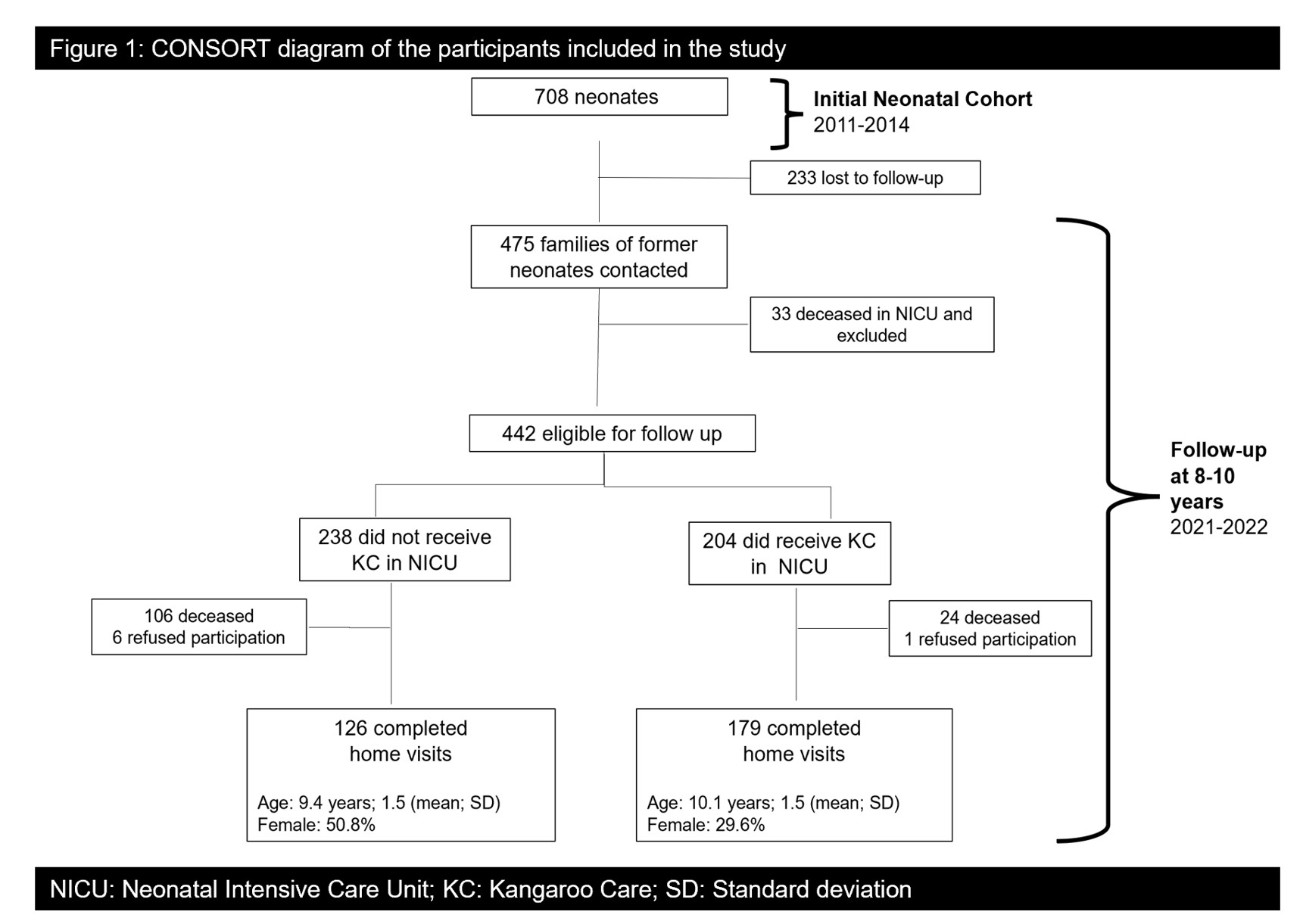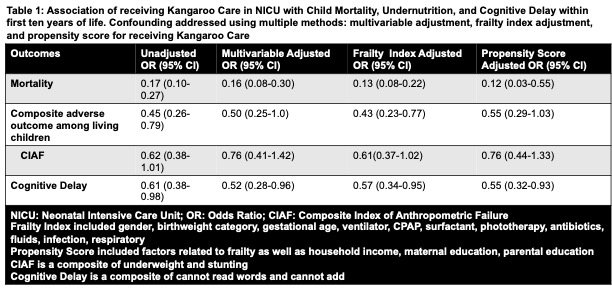Global Neonatal & Children's Health
Global Neonatal & Children's Health 1
631 - Effect of Kangaroo Care in the NICU on Pre-adolescent Outcomes in Gujarat, India: 10-year NICU Follow-up
Sunday, April 30, 2023
3:30 PM - 6:00 PM ET
Poster Number: 631
Publication Number: 631.315
Publication Number: 631.315
Nisha Fahey, UMass Chan Medical School, Worcester, MA, United States; Binoy V. Shah, Rollins School of Public Heath, Atlanta, GA, United States; Axil Patel, Pramukhswami Medical College, Karamsad, Gujarat, India; Emily Gang, University of Massachusetts Medical School, Feeding Hills, MA, United States; Maryjane Bentley, UMass Chan Medical School, Worcester, MA, United States; Amee Amin, Texas Children's Hospital, Houston, TX, United States; Dhwani Anil. Patel, Pramukhswami medical college , Karamsad, Anand, Gandhinagar, Gujarat, India; Dipen V. Patel, Bhaikaka University, Karamsad, Gujarat, India; Lawrence Rhein, University of Massachusetts Medical School, Waban, MA, United States; Apurv Soni, University of Massachusetts Medical School, Worcester, MA, United States; Somashekhar M. Nimbalkar, Bhaikaka University, Karamsad, Gujarat, India; Jeroan Allison, UMass Chan Medical School, Worcester, MA, United States
.jpg)
Nisha Fahey, DO, MSc (she/her/hers)
Assistant Professor
UMass Chan Medical School
Worcester, Massachusetts, United States
Presenting Author(s)
Background: Kangaroo Care is a lifesaving intervention for neonates in resource-limited settings. Real-world evidence of its efficacy on longitudinal outcomes among an Indian cohort is not well studied.
Objective: Compare mortality, morbidity, anthropometric, and cognitive outcomes in pre-adolescence (8-10 years old) among those who received Kangaroo Care with those who did not while hospitalized in the Neonatal Intensive Care Unit (NICU) in India.
Design/Methods: This prospective cohort study followed a cohort of children who were hospitalized in a NICU in rural India between 2011-2014 with follow-up home visits conducted between 2021-2022. Standardized and validated methods were used to measure height, weight, reading ability, and mathematics skills in addition to survey-based data collection for demographics, family characteristics, and major morbidity history. Data were combined with hospital EMR data from their NICU hospitalization. This combined dataset was used to calculate propensity scores for receiving Kangaroo Care and a frailty index to adjust for possible confounding by indication in the NICU setting. Multivariable regression models were used to estimate treatment effects at the time of follow-up.
Results: In total, 475 of the 708 children or their families were recontacted in the follow-up period and this study’s population is described in Figure 1. Among the living children, those who received Kangaroo Care were older and more likely to be male (p < 0.001). Receiving Kangaroo Care was associated with decreased odds of mortality, anthropometric failure, or cognitive delay (Table 1). Adjustments for baseline frailty or their propensity to receive Kangaroo Care did not considerably change these associations.
Conclusion(s): This represents the first longitudinal study of Kangaroo Care among children in India and found that not only was Kangaroo Care associated with reduced mortality among high-risk neonates, those that survived to early childhood also had a lower likelihood of having physical or cognitive deficits.


